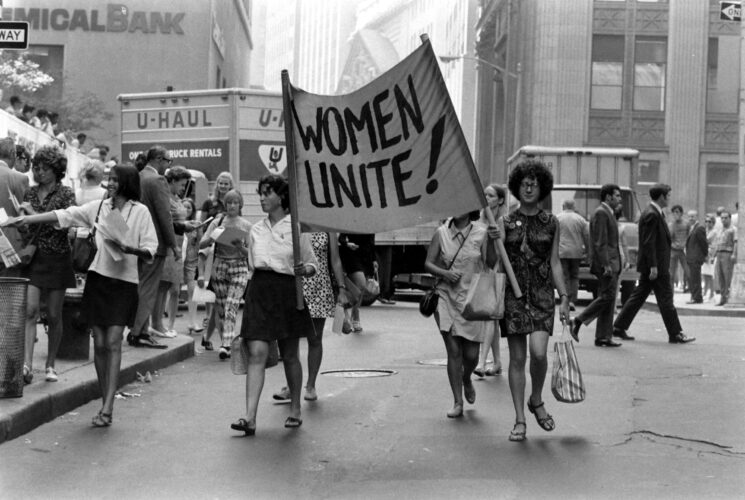
By Christine Garcia
Throughout Western history, defining feminism has triggered some debate, causing a division between feminists.
For example, in the 18th century, Sojourner Truth was a feminist and an abolitionist, who was famously known for her speech, “Ain’t I A Woman”, at the Arkon, Ohio, women’s rights convention. In her speech, Truth addresses that she was not treated equally compared to white men and white women because she was born into slavery.
Feminists in the 19th century acknowledged women like Truth’s involvement in women’s suffrage and discussed how black women’s issues were overlooked.
Furthermore, in the 20th century, the Equal Pay Act, the Civil Rights Act and Roe vs. Wade marked the second wave of feminism. However, activists like Ivy Bottini and many other women in the LGBTQ+ community began to question the intersection of misogyny and homophobia.
In the 1960s, Betty Friedan, who founded The National Organization for Women (NOW), publicly opposed Bottini, even going as far as to fire all lesbian members of NOW.
This started to divide many feminists due to the differing views of defining feminism.
According to civil rights activist, Chimamanda Ngozi Adichie, feminism is the belief in the social, political and economic equality of the sexes.
I believe that this quote best represents what I know feminism is. Feminism should be centered around intersectionality, which means interconnecting categories such as race, class, gender and identity with feminism.
To strengthen inclusion, feminists must recognize overlapping injustices in society, to address issues unique to people of color and the LGBTQ+ community.
‘White feminism’ is a non-intersectional movement that centers around a white woman’s gaze. White feminism began as a caste system where white, middle-class, cis-women’s issues were prioritized over the maltreatment of non-heterosexual people and people of color. The movement became popularized in conservative parties, despite its historical betrayal against people of color and the LGBTQ+ community.
Historians present Susan B. Anthony and Elizabeth Cady Stanton as pioneers of the women’s suffrage movement. Anthony and Stanton are women who were dispossessed based on their sex, but they benefit racially and economically, which put them at the forefront of the women’s rights movement.
Both women are most known for their accomplishments in women’s rights and justice. Especially the Seneca Falls Women’s Rights Convention, in 1848. The convention was a culmination of efforts from women, to produce The Declaration of Sentiments, which were founding documents that called for women’s suffrage and voting rights.
Anthony and Stanton did not support the 15th Amendment; which states that the federal government cannot discriminate against voters, based on race or color. They believed that white women had to have the right to vote first, over black men.
“We educated, virtuous white women are more worthy of the vote.” Said by Elizabeth Staton in the late 1860s.
Pseudo-feminism only appears to be inclusive, but it fails to address the racial and economic problems that non-white women face.
After the ratification of the 19th Amendment and 15th Amendment, which called for women’s voter rights and black people’s voter rights; black men and women were still discriminated against when it came to voting.
Black women and men were forced to take ‘literacy tests’ or pay ‘poll taxes’, to vote. This became known as Jim Crow laws where state laws enforced racial segregation.
Disregarding race or identity in feminism overshadows the type of struggle only known by minorities. For the reason that oppression is fluid, it can’t be defined by one hierarchy. People who lack an understanding of intersectionality can unknowingly participate in active oppression against minority groups, like Anthony and Stanton.
Acknowledging the intersectionality between multiple minority groups will assist the situation and create justice within the political system. This movement will help create policies and advocacy for multiple minority groups.
For example, intersectional feminist icons Marsha P. Johnson and Kimberlé Crenshaw, have long argued and advocated for the rights of the LGBT+ community as well as people of color.
Marsha P. Johnson was a trailblazer when it came to fighting for homeless transgender youth and equality between genders. She established many organizations and became the voice for trans youth during the Stonewall uprising.
Kimberlé Crenshaw is a pioneering scholar in the black feminist legal theory, in which she studied how white feminism affects women of color, specifically black women. Crenshaw also studied intersectional feminism, to prove that feminism is not only connected to gender, but also race and economic relations.
Intersectional feminism can be a path to mitigating the harmful aspects of pseudo-feminism; it can dissimulate stereotypes and validate experiences unique to minorities. Creating a space where the LGBTQ+ community and people of color are being heard, can help society advance as a whole, to make feminism more inclusive.





